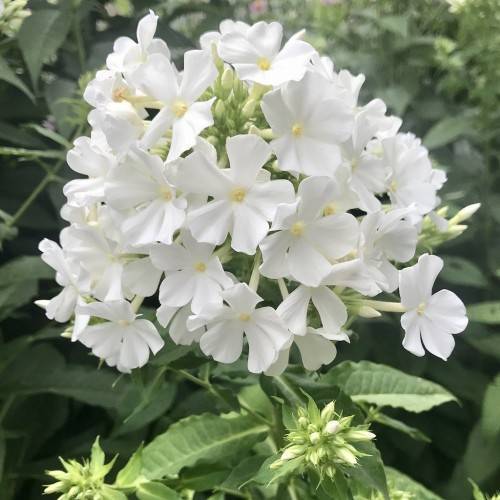
garden phlox
Phlox paniculata 'Miss Universe'
Also Known As - border phlox,common phlox,common phloxCycle:
Herbaceous Perennial
Watering:
Average
Hardiness Zone:
4 - 8
Flowers:
Flowers In Summer
Sun:
Full sun, Part sun/part shade
Soil:
Rocky , gravelly , dry, Well-drained
Fruits:
Fruits In Autumn Ready In
Leaf:
Yes
Growth Rate:
High
Maintenance:
Moderate
Care Level:
Medium
watering
Garden phlox require regular watering for optimum growth. During its active growing period, from spring to fall, the plant should be watered deeply about once a week to ensure the soil remains moist, but not soggy. During hot weather, it may be necessary to water more frequently. During winter, water garden phlox only when necessary, typically after several weeks of no precipitation. Be sure to reduce the amount of water during the winter months to protect the plant from freezing.
sunlight
Garden phlox (Phlox paniculata 'Miss Universe') requires full sun to blooms its best. It should get at least 6 to 8 hours of direct sunlight every day, with the best time of the day for sunlight being midday when the sun's rays are the strongest. Filtered sunshine during the late morning and early afternoon is also beneficial to this plant. Too much shade will reduce the flower size and hinder the blooming process. For best results, keep the plant in full sun during the growing season.
pruning
Garden phlox (Phlox paniculata 'Miss Universe') should be pruned in late winter or early spring before new growth begins. Start by cutting back the stems about 1-third to 1-half their length to encourage a more compact and bushy habit. Next, remove any dead or diseased stems or weak branches and stems that are crossing or rubbing against 1 another. Keep in mind that pruning too much or too late can reduce flowering. After the initial pruning, you may perform a lighter pruning in late summer to remove spent flowers and excess growth. This helps keep the plant looking its best and can also help delay flowering so that it persists into the fall.
